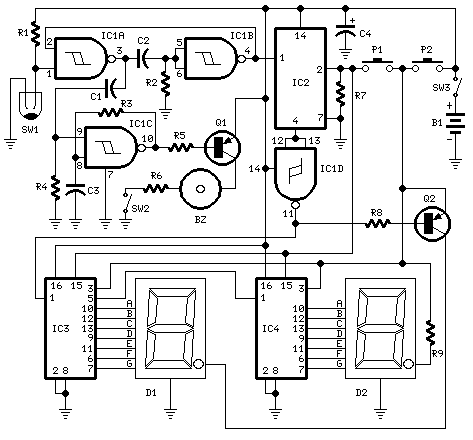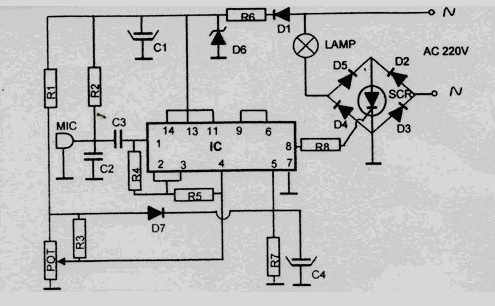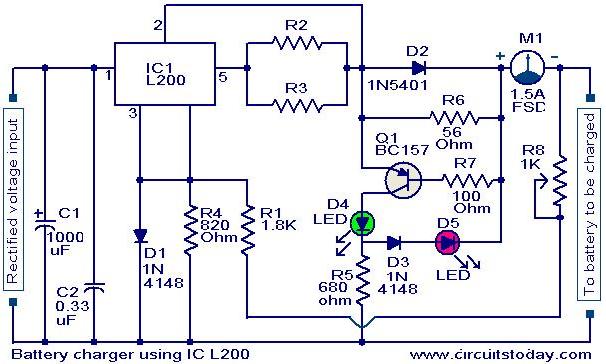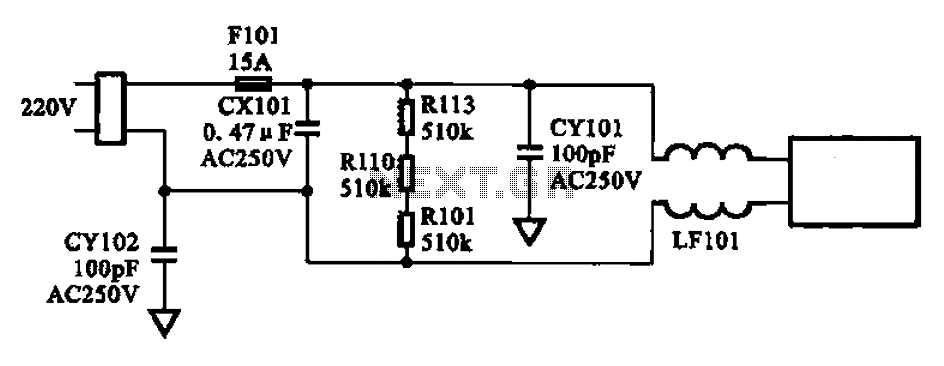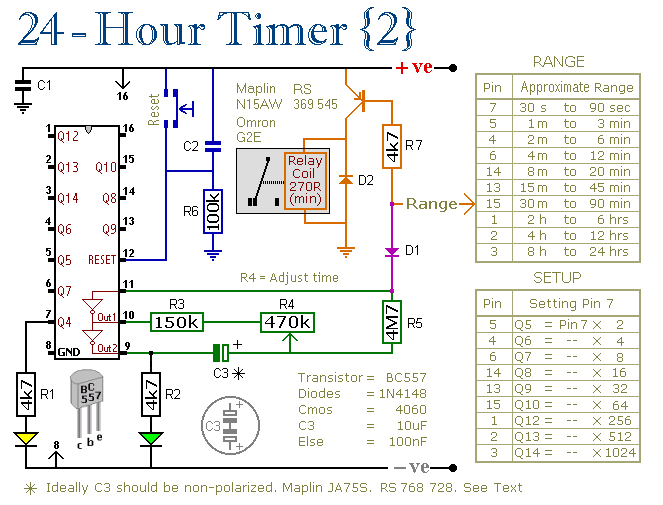
Analogue to digital converter circuit
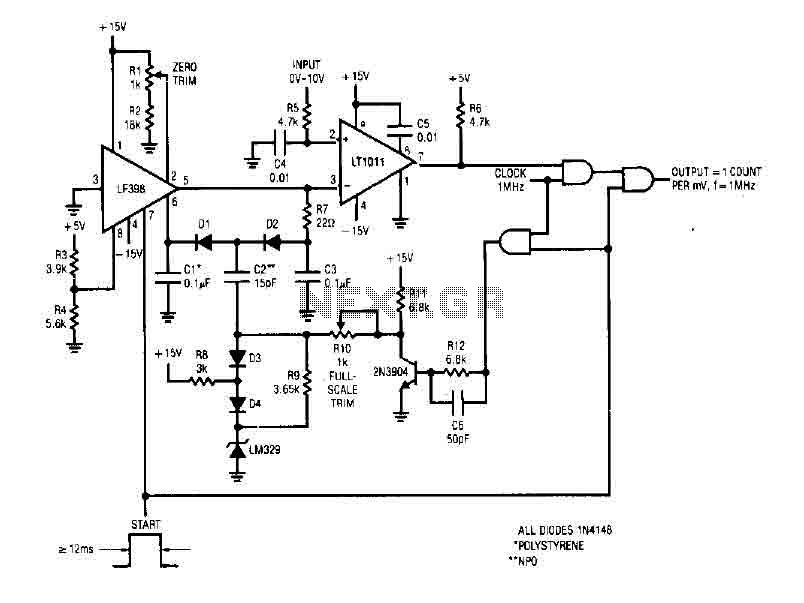
The simple 4-digit converter circuit has an output count of 1, designed for a frequency range from f-IMHz to 10.000 MHz. All diodes used in the circuit are IN4146 "POLYSTYRENE" NPO. The circuit utilizes the LF398 at the input stage.
The described 4-digit converter circuit operates as a frequency counter, capable of accurately measuring and displaying frequencies within the specified range. The LF398, a precision analog-to-digital converter (ADC), serves as the input component, converting the analog frequency signal into a digital representation. The LF398 is known for its high-speed performance and low power consumption, making it suitable for applications where rapid and efficient frequency counting is required.
The choice of IN4146 diodes, recognized for their low leakage current and high-speed switching capabilities, enhances the circuit's performance by ensuring minimal signal distortion and maintaining signal integrity. The use of "POLYSTYRENE" NPO capacitors in the design further contributes to the stability and accuracy of the circuit, as these capacitors exhibit low dielectric losses and excellent temperature stability.
The output count of 1 indicates that the circuit provides a single digital output, which can be interfaced with a display module or microcontroller for real-time frequency readouts. The overall design is optimized for simplicity, reliability, and precision, making it suitable for various applications in telecommunications, signal processing, and laboratory measurements. The circuit can be further enhanced by incorporating additional features, such as averaging or filtering, to improve measurement accuracy in noisy environments.That simple 4 digits converter circuit has OUTPUT COUNT = 1 according to my f-IMHz to 10.000. All diodes are IN4146 "POLYSTYRENE" NPO. The circuit uses the LF398 at input.
The described 4-digit converter circuit operates as a frequency counter, capable of accurately measuring and displaying frequencies within the specified range. The LF398, a precision analog-to-digital converter (ADC), serves as the input component, converting the analog frequency signal into a digital representation. The LF398 is known for its high-speed performance and low power consumption, making it suitable for applications where rapid and efficient frequency counting is required.
The choice of IN4146 diodes, recognized for their low leakage current and high-speed switching capabilities, enhances the circuit's performance by ensuring minimal signal distortion and maintaining signal integrity. The use of "POLYSTYRENE" NPO capacitors in the design further contributes to the stability and accuracy of the circuit, as these capacitors exhibit low dielectric losses and excellent temperature stability.
The output count of 1 indicates that the circuit provides a single digital output, which can be interfaced with a display module or microcontroller for real-time frequency readouts. The overall design is optimized for simplicity, reliability, and precision, making it suitable for various applications in telecommunications, signal processing, and laboratory measurements. The circuit can be further enhanced by incorporating additional features, such as averaging or filtering, to improve measurement accuracy in noisy environments.That simple 4 digits converter circuit has OUTPUT COUNT = 1 according to my f-IMHz to 10.000. All diodes are IN4146 "POLYSTYRENE" NPO. The circuit uses the LF398 at input.
